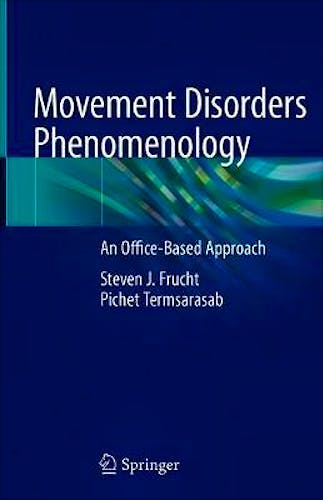

No hay productos en el carrito



Movement Disorders Phenomenology. An Office-Based Approach
Frucht, S. — Termsarasab, P.
1ª Edición Marzo 2020
Inglés
Tapa dura
265 pags
700 gr
16 x 24 x 2 cm
ISBN 9783030369743
Editorial SPRINGER
LIBRO IMPRESO
-5%
145,59 €138,31 €IVA incluido
139,99 €132,99 €IVA no incluido
Recíbelo en un plazo de
2 - 3 semanas
LIBRO ELECTRÓNICO
-5%
97,19 €92,33 €IVA incluido
93,45 €88,78 €IVA no incluido
Acceso On Line
Inmediato
Chapter 1 What Is Phenomenology and Why Should We Care?Chapter 2 The Approach to the Movement Disorders PatientChapter 3 Typical Parkinson's Disease PhenomenologyChapter 4 Phenomenology of Atypical ParkinsonismChapter 5 Phenomenology of MyoclonusChapter 6 Phenomenology of TicsChapter 7 Phenomenology of ChoreaChapter 8 Phenomenology of TremorChapter 9 Phenomenology of DystoniaChapter 10 Phenomenology of AtaxiaChapter 11 The Voice in Movement DisordersChapter 12 "The Eyes Have It"- Saccades and Fixation Defects in Movement DisordersChapter 13 Phenomenology of Gait and BalanceChapter 14 Unusual PhenomenologiesChapter 15 Movement Disorders EmergenciesChapter 16 Very Unusual PhenomenologiesChapter 17 Imaging in Movement Disorder PhenomenologyChapter 18 Genetics in Movement Disorders Phenomenology
This book presents a comprehensive, practical approach to the evaluation of movement disorders using phenomenological basic principles, new discoveries in phenomenological research, and core values of outpatient neurology.
Movement Disorders Phenomenology begins with an overview of phenomenology and common approaches to movement disorder patients. Subsequent chapters then accurately and concisely relay information on major hypokinetic disorders such as atypical Parkinsonism, idiopathic Parkinson's disease, cortical myoclonus, and complex motor tics. Expertly written text is further supplemented by patient vignettes at the beginning of select chapter that focus the reader's attention and highlight the urgency of the problem. These high quality videos aid in the astute clinical diagnosis of many movement disorders that are still largely dependent on visual pattern recognition in the clinic. The book closes with a timely discussion on the role of genetics in movement disorders.
Written for the practicing physician, Movement Disorders Phenomenology is an indispensable reference for neurology residents, general neurologists, movement disorders fellows and clinicians, and to any clinician who encounters and evaluates patients in the outpatient arena.
Steven J. Frucht, MD Professor of Neurology New York University School of Medicine Director, Division of Movement Disorders The Marlene and Paolo Fresco Institute for Parkinson's and Movement Disorders NYU Langone Health
Pichet Termsarasab, MD Consultant Neurologist Neurology Division, Department of Medicine Faculty of Medicine Ramathibodi Hospital Mahidol University Bangkok, Thailand
© 2025 Axón Librería S.L.
2.149.0